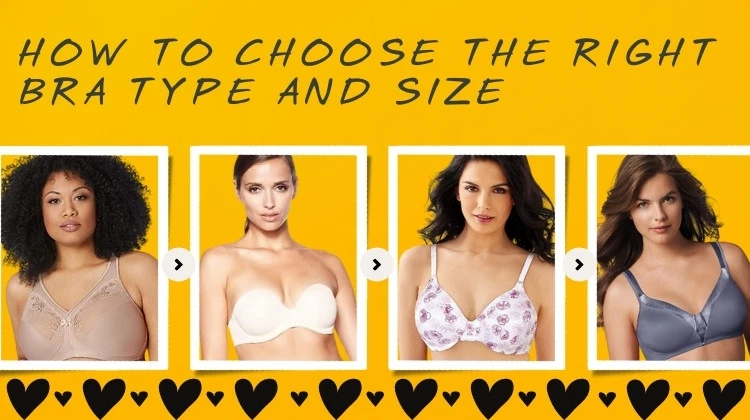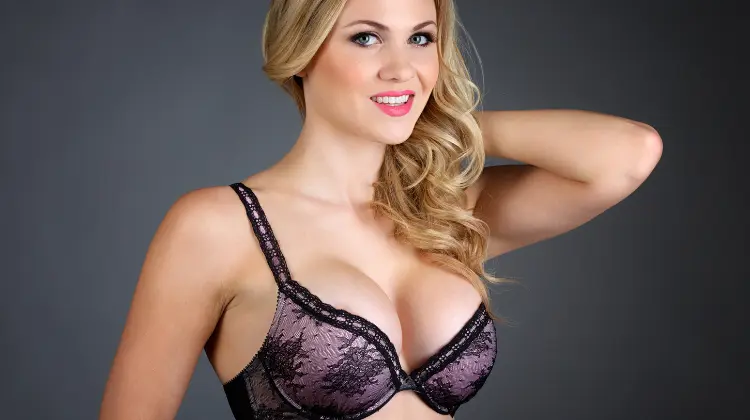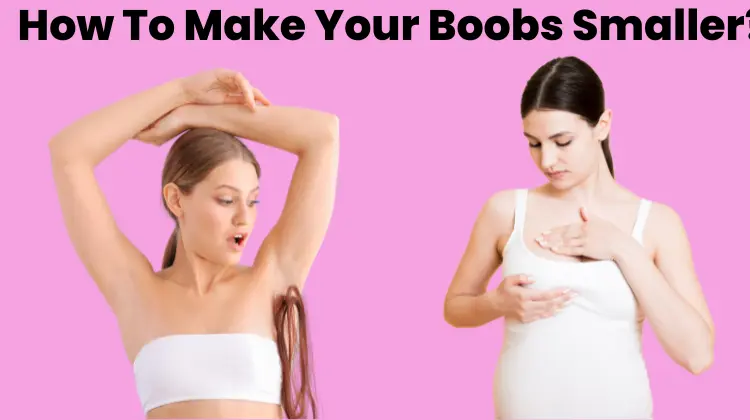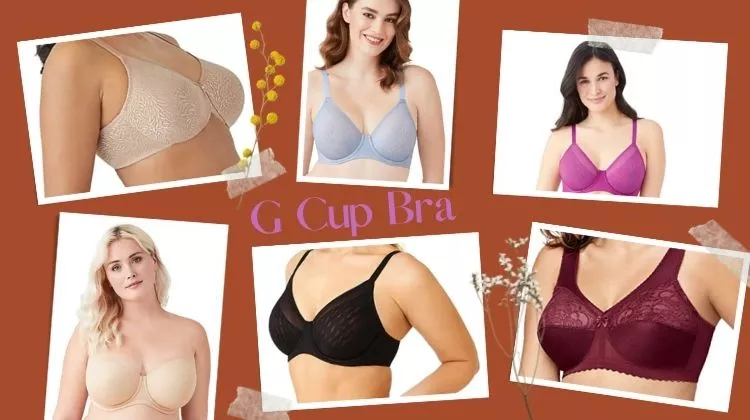How to choose the right bra type and size
Lingerie shopping is a beautiful experience for me because I love the feeling of finding that perfect bra. My name is Harry Duff and I am going to share my experience With such limited supply, lace, in particular, has become even more difficult to find than before. Perhaps one day, all women will feel as if they can express themselves through their lingerie with pride and confidence. But the question is how to choose the right bra type and size.
Because the world of bras is confusing, and it doesn’t get easier with time. You may have found yourself in this store before, frustrated at the lack of options for your perfect fit, leaving without anything to wear back home.

There are many styles in different sizes like cups, band sizes etc. The best solution for choosing two favourite types is first strapless bras or balconette bras. It can be frustrating when your favourite bra doesn’t work.
It’s not a flaw with the clothing or you, it just takes time to find ones perfect for both of us, and we’re constantly growing as individuals, which means what may have worked ideally last year might not be this one. Now we define different types of bras to make your choice easy.
Different types of bras
Padded Bras
A padded bra is a great way to give yourself that extra boost of confidence when it comes time for your big day. Padding can be found in both underwire or wireless bras, which will give you support and lift while wearing their best option if this is what works best, or non-padded styles that are perfect all year round.
T-shirt Bra
A T-shirt bra is a type of lingerie with cups made from smooth fabric to hug your skin. These bras should be worn with fitted clothes to have the cleanest look possible, and they’re best for wearing under tighter outfits, like dresses or skirts.
Push-Up Bra
A push-up bra is like an invisible silicone breast cage. It lifts your breasts and pushes them closer while giving you a very prominent cleavage, but it doesn’t show under clothes! Push-up bras usually have underwired cups for that extra support on level 3 heavy-duty push-ups.
Strapless Bras
A strapless bra is a style of lingerie that goes through invisible straps. Its primary support comes from underwire cups and an inner silicone lining along the edges, which helps keep it in place during activities like dancing or running around with kids at home.
This type can have side boning for extra durability, so you never need to worry about adjusting your top while wearing one. They’re perfect when worn underneath tube dresses and off-shoulder tops since they offer enough coverage but not too much strictness/constriction feeling on the skin smooth without being uncomfortable due to relative motion exposure risks associated with wearing a strapless top.
Balconette Bra
Balconette bras are a type of bra that has its roots in France. The name ‘Balcon’ comes from the French word for balcony. It refers to how this style resembles necklines with wide-set straps, most especially those found on homes dating back centuries when they were used primarily by royalty or wealthy patrons who could afford such luxuries as spacious living quarters.
Where one could stand outside looking at their backyard without needing any protection against sunburns while drinking wine during an afternoon social hour balconette bras are good for women with larger busts as they offer more coverage and support than other styles like the plunge bra.
Bralette
A bralette is a type of lingerie similar to a sports bra, but it has less compression, meaning it doesn’t flatten your chest as much. This style bra is perfect for everyday wear and comes in both wired and wireless options, making it an excellent choice for women who want something comfortable that still looks good.
Bandeau Bra
A bandeau bra is a type of tube top-style lingerie that goes around your torso instead of having straps. It’s made from stretchy fabric, so it fits snugly against your body and can be worn on its own or under a loose top, so you can have the option of wearing either one depending on where your day is taking you.
These are perfect if what works best for you is having something without straps but which offers adequate coverage in case it might be more practical than strapless bras since they generally help keep girls boobs some control when moving about freely throughout the whole day with no lumps, bumps, or ridges between shoulder blades.
Wireless Bra
Unlike any other type mentioned here, a wireless bra does not offer support from an underwire. Instead, they work by using compression around your breasts to pull them closer together and prevent bounce while remaining comfortable enough for all-day wear as the best wireless bra provides lift and side support well.
Front closer Bra
Front closer bras are the most convenient type of bra to wear. They’re also popular amongst women who find it difficult or annoying to hook their tops in a back closure, and they make up for this con with ease on the front side.
Sports Bras
Best Sports bras are a necessity for any physical activity. These special undergarments support the breasts and minimize bounce, depending on what you’re doing with them. There is an option to pick from low-impact ones that won’t cause too much strain or even high-impact options if your workout calls for rigorous exercise like running marathons.
Transparent Bra
The transparent or clear strap bra makes it perfect for wearing under clothes that don’t cover your shoulders or when you want to go see-through. The shoulder strap goes completely invisible, so there’s never any bagginess at the top.
Bra for large bust
Full-figure bras for lift and side support are great options for women with fuller breasts. They provide more coverage than slim-fitting or classically styled garments and can help prevent spillage inside bumps that often occur when you’re wearing something too tight around your rib cage. The best part is they look flattering on everyone.
Demi Bras
The demi bra is the perfect undergarment for women who want their nips covered while still fashionable. Unlike full coverage, this half-cup style offers more comfort and coverage than other varieties of bras due to its design which tucks you in at both ends with fabric that helps hold breasts shapely.
I also give you a quick review of these cup sizes.
A Cup Bras: If you’ve ever been frustrated that the wrong bra size can ruin your shape and give you a worse look in an outfit all day.YOUR perfect fit living without backaches becomes more accessible than ever before. A small-chested woman needs at least an A Cup.
B cup bras: Every woman is self-conscious about her bra size, from minor to large-busted women. A B cup may seem too small for some, and people with larger busts often find that their bras do not provide enough support around the sides or front.
D cup bras:D cup bras are quarter cup bras with a cut-and-sewn cup, supporting fabric or just two layers of fabric. D-cup bras are not suitable for big busts because they have little support and lift.
F cup bras: Some F-size cup bras are beautifully constructed and have seaming, dual layers of sheer stretch fabric. The T-shirt size F bra styles provide you with smooth, seamless shaping; they usually come with underwire cups.
G cup bras: G Cup bras are most famous among big-busted women. SoG cup is also the size of big boobs.
H cup bras: If your bust is 8″ larger than your underbust, then you are an H cup size.
I cup bras: I cup has more enormous boobs on larger band sizes than smaller ones. However, you are looking for a big cup size. So you will find a pretty and feminine catalogue of large-size bras. A cup bra consists of seamless, front closure, nursing, underwire, and wire-free versions.
K Cup bra: If your demand is a high level of support, the K Cup bra offers you the highest levels of support for your big breast sizes. The K-cup bras not only offer support to your breasts but also make you look nice.
An important tip for how to choose the right bra type and size
After defining the bra type, I give you some essential tips on How to choose the right bra type and size. Carefully select your bra that is not too small or too big and is helpful for women of all ages and sizes.
The straps should be supportive.
The cups of every bra hold the breasts in place, but the band is responsible for about 90 per cent of the support. So the straps to hold up your bust are helpful to keep your cup flush with your body and shape your bust. Hence if your band and cup well fit, the straps will not slip off, and your bra will stay in place.
know your size and your “sister size
Like jeans are difficult-to-shop-for items, there are complete changes in bra size. The exact size will fit a brand, even from one style to another. Therefore experts say women should also know both proper size and sister size.
If your regular size does not fit, you should try your sister size. For example, If you’re a 34C, you might find bras that fit better in a 36B or a 32D.
The band should be snug, not suffocating or loose.
You can fit your finger between your back and the strap with only about an inch of stretch when you get the right band size. If your band is too small, the underwire will squeeze or dig into your breast tissue so that it will create problems. The loser is also not better for support.
Remember that the band is most helpful for holding up the breasts, so a loose band that slips between your shoulder blades will not offer the support you need, and you feel less comfortable in the long run. So the perfect fit band will offer you a good grip.
Look at Middle Bit Of Fabric
If your bra style is not working for you, Look at the centrepiece between the two cups should lay flat against your sternum. This is called tacking, and it helps to anchor the bra. If the gore of your bra is floating off the body or moving around, you can get a lot of shifting and wiggling in the cups.
Measure bra band size
Band size is the number found in bra sizes. There are so many different numbers. Usually, brands go by inches and start at 30, whereas some go by centimetres and start at 70. Try smaller and bigger sizes for better fitting if your number is odd.
Choose the right cup.
How to choose the right bra type and size? Measure your bust the circumference around the nipple area, and subtract the number from the band size and the difference per cent to the cup.
Find the right cutting.
You want more volume than a push-up bra with more padding for you. A thinly padded bra will be the best option if you wear fit clothes. For more comfort, triangle bras are a great way to get minimal support without compromising comfort.
But keep in mind that this type of bra does not tend to keep to your breast’s natural shape instead of that round, full shape. Sports bra if you’re doing sports, which gives you the best support sans the wire. If you have surgical issues, consider a post-surgical bra to ensure you get the most support.
Steps for a bra fitting
First of all, Measure your band. Wrap a measuring tape directly under your busts. Keep in mind it should be directly parallel to the bottom of the bra band. Now measure your bust.
Place the tape on the whole part of your breast. Subtract the band size from your breast size to find the correct cup size. Every inch equals the one cup size. Now you can understand How to choose the right bra type and size.
Clarification on Sister Sizes:
Expand on the concept of sister sizes by explaining how moving up or down a band size changes the cup volume. This concept can be confusing, so providing a clearer explanation or example could be beneficial. For instance, explain that if you go down a band size, you should go up a cup size to maintain the same cup volume, and vice versa.
Importance of Material:
The material of a bra can significantly affect its comfort, durability, and suitability for different occasions or weather conditions. Adding a section about choosing the right material based on your needs (e.g., breathable fabrics for exercise, smooth fabrics for tight-fitting clothes) would be helpful.
Addressing Common Fit Issues:
The band and straps fit correctly; it could also address common fit issues and their solutions, such as how to deal with cup gaping, underwire discomfort, or bands riding up. It could provide more targeted advice for readers facing these common problems.
Care and Maintenance Tips:
Longevity and maintaining the shape and support of bras are crucial aspects that weren’t addressed. Including tips on properly washing and storing bras can help readers keep their lingerie in the best condition, ultimately saving money and maintaining breast health.
Consideration for Special Needs:
There is a broad range of bra types; adding a section for special needs, such as mastectomy bras, maternity and nursing bras, or bras designed for post-surgical recovery, would make the guide more inclusive and helpful for a wider audience.
Personalization Tips:
Emphasize the importance of personal preference and comfort over sticking strictly to size charts or conventional advice. Encouraging readers to trust their feelings about what feels supportive and comfortable can empower them to make better choices.
Signs It’s Time for a New Bra:
Mention signs that indicate it’s time to replace an old bra, such as stretched bands, fraying fabric, or when the bra no longer provides adequate support. It can help readers understand the lifespan of their bras and when to invest in new ones.






